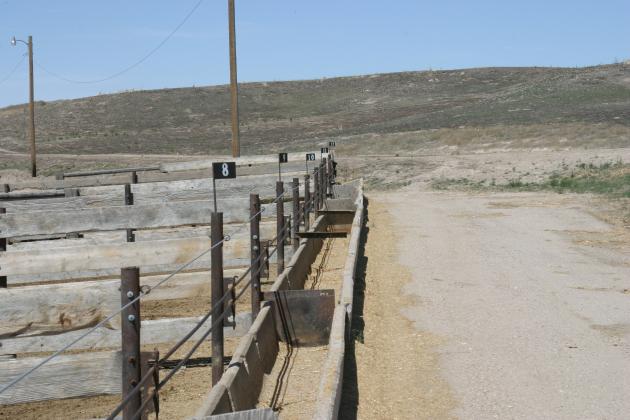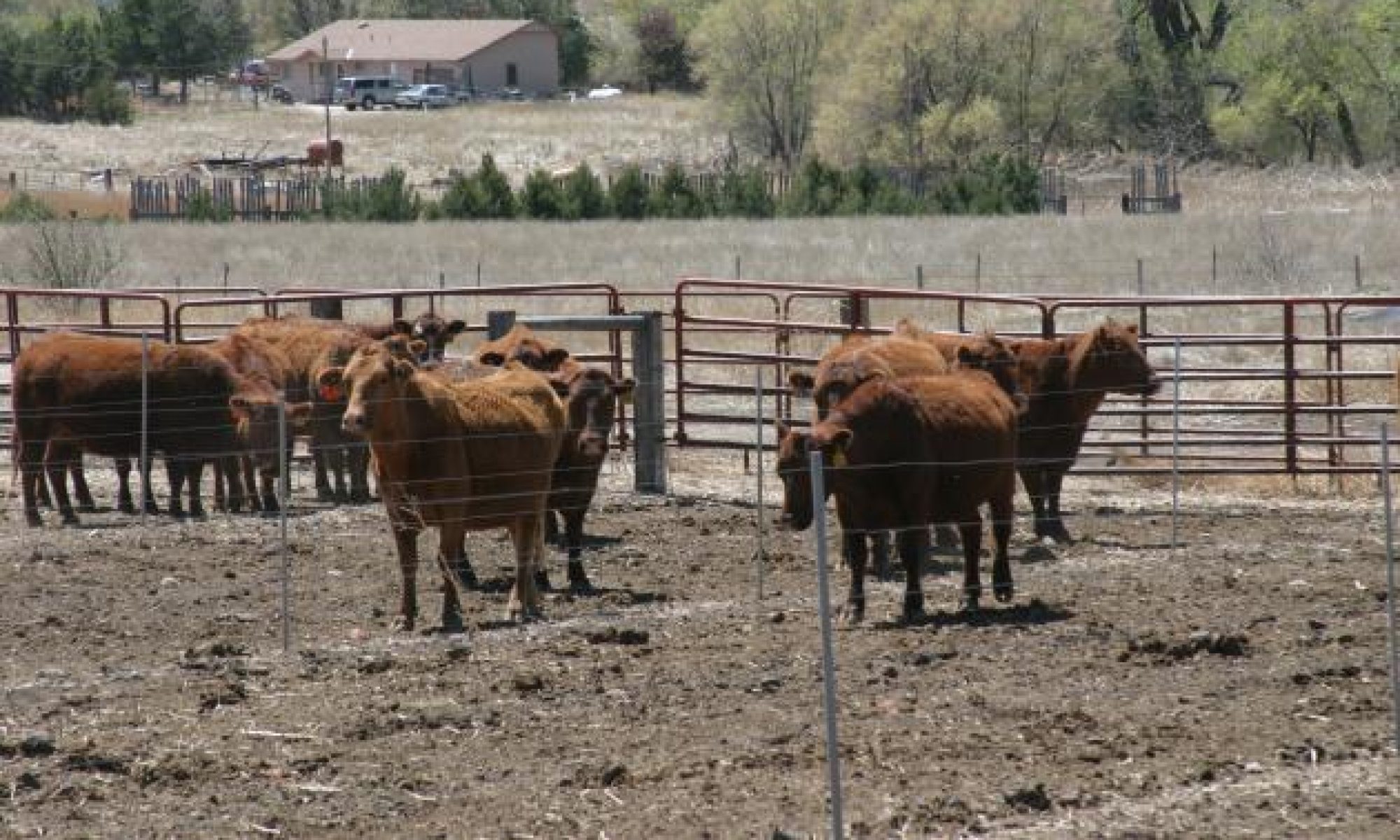Dry Lotting
Some basic elements that should be evaluated before feeding cows include facilities and equipment. Since cows are substantially larger than most feedlot steers they will require more bunk space. Most recommendations suggest between 20 and 24 inches of bunk per animal. It is also important to have a good source of clean water. Good recommendations for the amount of water required by an open cow in a feedlot setting have not been established. However, the National Research Council suggests that an 1100-lb gestating cow requires approximately 6 gallons of  water per day. It is also important to have adequate equipment for feed delivery. Given the high-energy diets cull cows are likely to be fed and the associated challenges with metabolic disturbances, a mixer wagon with a scale is recommended. There has been some interest in utilizing self-feeders for cull cows. While this is an intriguing concept, it has not been investigated in reviewed literature.
water per day. It is also important to have adequate equipment for feed delivery. Given the high-energy diets cull cows are likely to be fed and the associated challenges with metabolic disturbances, a mixer wagon with a scale is recommended. There has been some interest in utilizing self-feeders for cull cows. While this is an intriguing concept, it has not been investigated in reviewed literature.
Selecting the “right kind” of cows to feed is also crucial to the success of the program. First and foremost, cull cows should be sound and healthy and in thin to moderate condition. Cows that are unsound or injured should be marketed directly to a packer. Unhealthy cows should also be avoided. Keep in mind, if a treatment is required, it will likely come with a slaughter withdrawal, which could delay marketing. It is also recommended to work with a veterinarian to plan a vaccination and anthelmintic strategy.
At the beginning of the feeding period cows should be slowly adapted to a finishing diet much like yearling cattle. Cull cows are generally coming from a forage-based diet and will need some time for their rumen to adapt for a concentrate-based finishing diet. Generally it is best to start with a diet containing approximately 50 Mcal NEg/cwt and gradually step up over a period of 2 to 3 weeks to a diet containing 60 to 63 Mcal NEg/cwt and 11.5% crude protein. Diets do not need to be exotic to accomplish the task at hand. Cull cows are usually mature, non-gestating, and non-lactating so their requirements are quite low.
Pasture Grazing
Grazing may also be a viable option for producers to feed cull cows. In regions where winter range is available, cull cows could be grazed and supplemented to support reasonable rates of gain. Grazing is even more appealing if crop residues, especially corn stalks, are available. The general rule of thumb for gestating cows is 1 acre per cow per month. However, when feeding cull cows, it may be desirable to allow more acreage per cow to provide more corn for a longer period of time. Under these conditions, it is not unreasonable to expect a cow grazing corn stalks to gain 1.5 or more lb/day. Over 2 months, a cow could conceivably gain 90 lb, or approximately one body condition score, or more. As the grazing period progresses, cows should be supplemented with a natural protein source to support forage digestion. 
A common question when feeding cull cows is how long should they be fed. One of the primary concerns associated with time on feed is fat color. It is more desirable for white fat as opposed to a more yellow fat color. Yellow fat is a result of the cows consuming high amounts of carotene, which is high in forages. High-grain diets, which are inherently low in carotene, will help convert yellow fat to white fat. Some research suggests that feeding a high-grain diet for as few as 56 days will result in a significant change from yellow to white. However, other research has not documented a change in the amount of yellow fat in cows on feed for as long as 105 days.
Beyond the conversion of yellow fat to white fat, the decision on how long to feed cows should be based upon the condition of the cows, expected feedlot performance, feed cost, and market timing. As mentioned previously, cows that are over fed can be subject to price discounts. To avoid discounts cows that begin the feeding period in moderate (body condition score of 5) or better body condition should be fed for shorter durations. Cows that are thinner, can be fed for longer periods of time; however, it is important to remember that as the duration of the feeding period increases, it is possible that feed efficiency may decrease.
